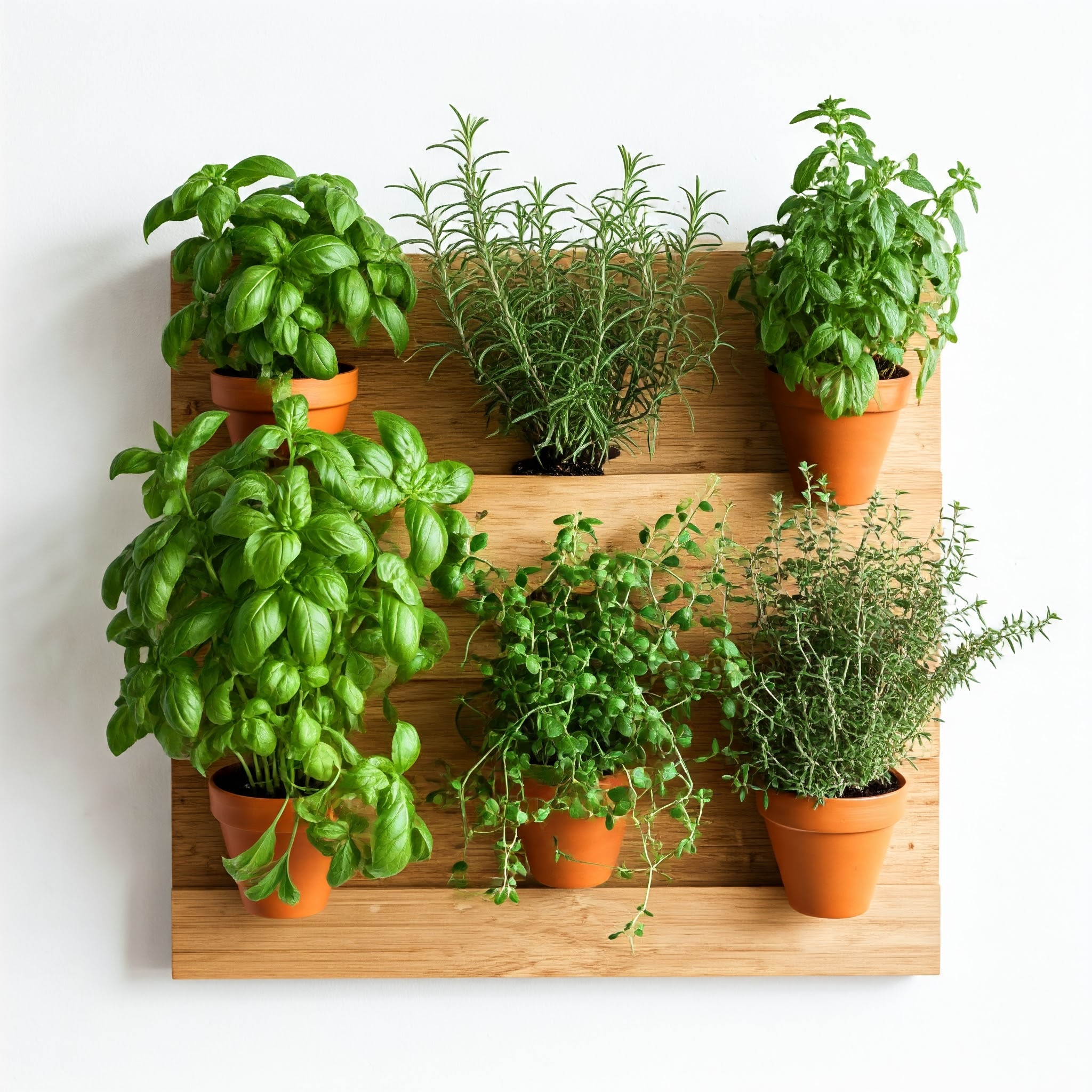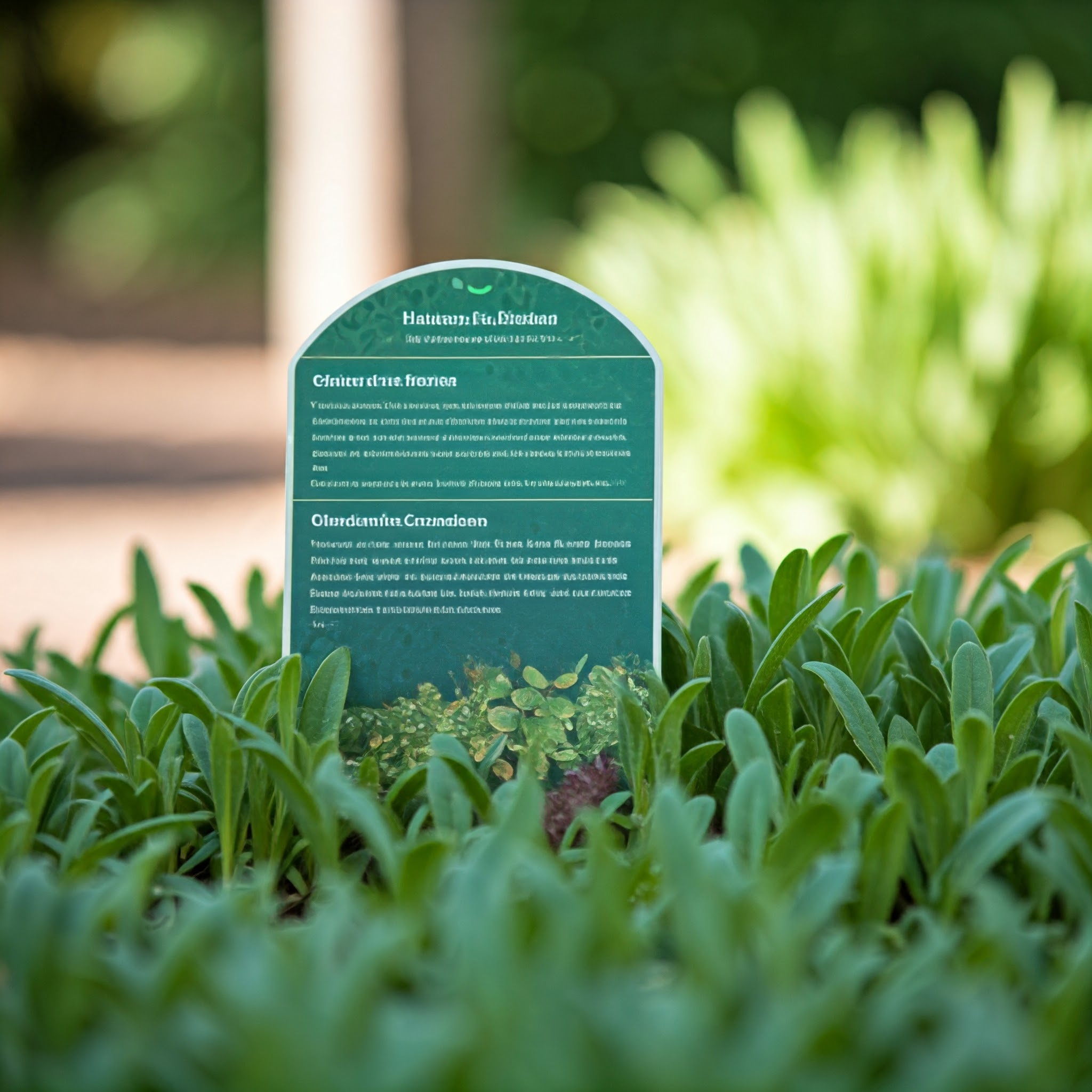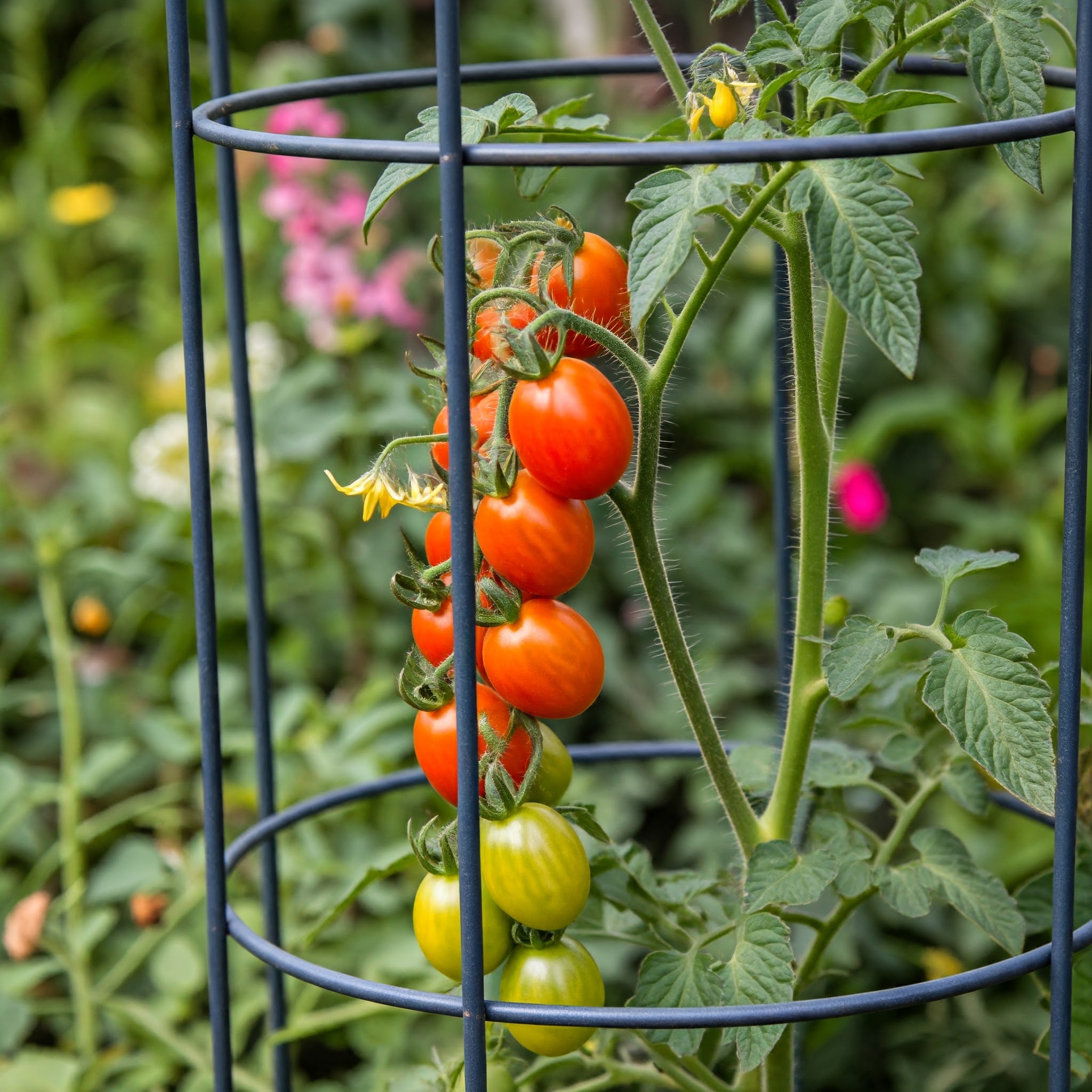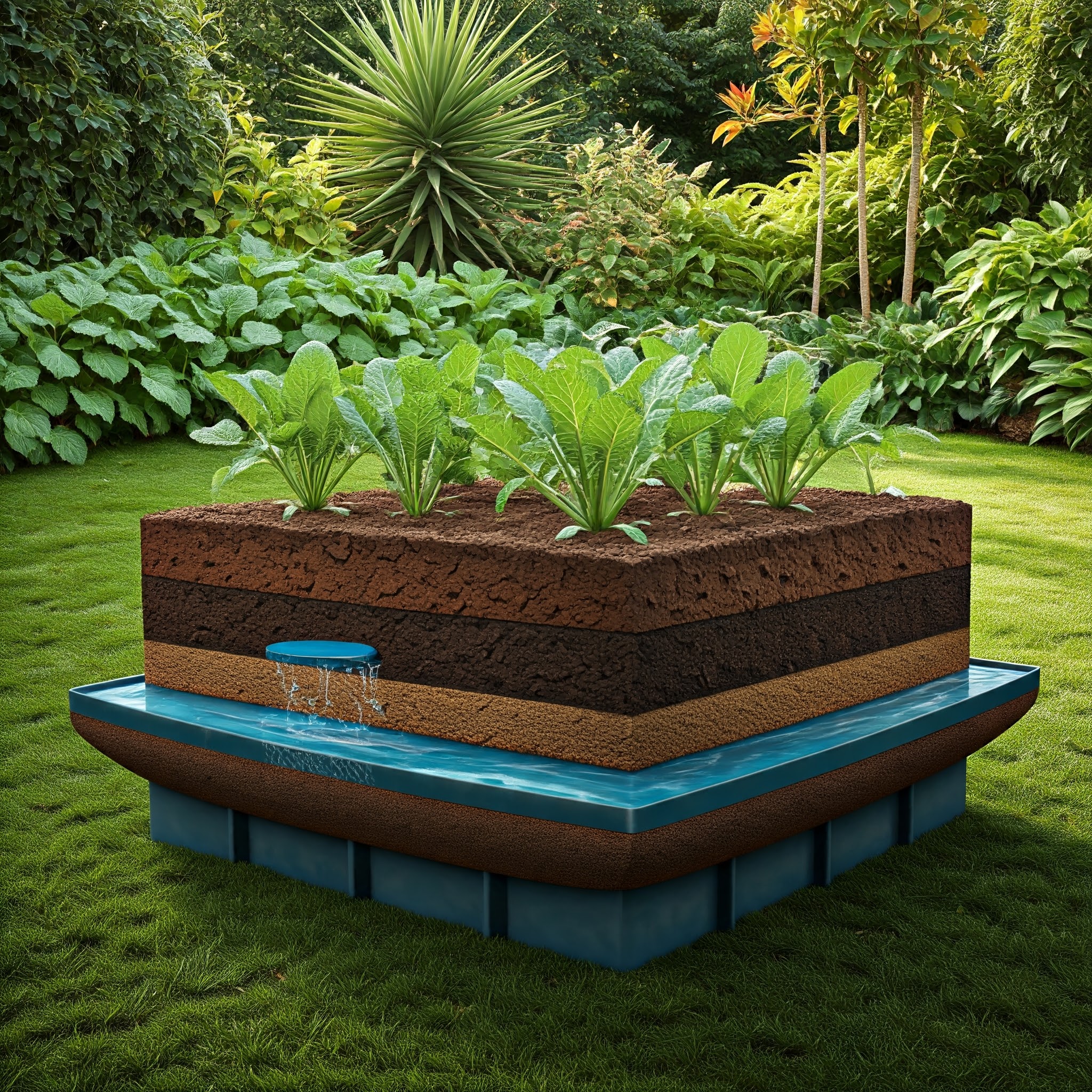Many people love the idea of having fresh herbs at their fingertips but struggle with the challenges of outdoor gardening. Whether it’s due to limited space, unpredictable weather, or lack of a green thumb, growing herbs outdoors can be daunting.
Imagine constantly battling pests, dealing with inconsistent sunlight, or watching your herbs wither away due to neglect. These common issues can make gardening feel more like a chore than a joy, leaving you frustrated and herb-less.
Enter indoor herb gardens. With the right setup and care, you can enjoy fresh, flavorful herbs year-round, right from the comfort of your home. This guide will walk you through everything you need to know to start and maintain a thriving indoor herb garden, from choosing the best herbs to troubleshooting common problems.
What is an Indoor Herb Garden?
An indoor herb garden is a collection of herb plants grown inside your home. Unlike outdoor gardens, indoor herb gardens are not subject to the whims of weather and pests, making them easier to manage and maintain. They can be grown in various containers, from traditional pots to innovative hydroponic systems, and placed in different locations around your home, such as windowsills, kitchens, or even offices.
Why Choose an Indoor Herb Garden?
- Convenience: Having fresh herbs within arm’s reach makes cooking more enjoyable and flavorful.
- Year-Round Growth: Indoor gardens are not affected by seasonal changes, allowing you to grow herbs all year long.
- Space Efficiency: Perfect for those with limited outdoor space, such as apartment dwellers.
- Aesthetic Appeal: Indoor herb gardens can enhance your home decor with their lush greenery.
- Health Benefits: Growing your own herbs ensures they are free from pesticides and other chemicals.
Benefits of Growing Herbs Indoors
Growing herbs indoors offers numerous advantages that go beyond just having fresh ingredients for your meals. Here are some key benefits:
- Fresh Herbs Year-Round: Indoor herb gardens allow you to enjoy fresh herbs regardless of the season. This means you can have basil for your summer salads and rosemary for your winter roasts without worrying about the weather.
- Convenience and Accessibility: Having an indoor herb garden means you can easily snip off a few leaves whenever you need them, without having to step outside. This is especially useful for those who live in urban areas or have limited outdoor space.
- Improved Air Quality: Many herbs, such as mint and basil, are known for their air-purifying properties. They can help remove toxins from the air, making your home environment healthier.
- Aesthetic Appeal and Home Decor: Indoor herb gardens can add a touch of greenery to your home, making it more inviting and aesthetically pleasing. They can be incorporated into your kitchen decor, living room, or even your office space.
- Cost Savings on Grocery Bills: Growing your own herbs can save you money in the long run. Fresh herbs from the store can be expensive, and they often go bad quickly. With an indoor herb garden, you can harvest just what you need, reducing waste and saving money.
- Sustainable Living: Growing your own herbs is a step towards a more sustainable lifestyle. It reduces the need for plastic packaging and transportation associated with store-bought herbs.
Best Herbs for Indoor Gardening
When it comes to choosing herbs for your indoor garden, it’s important to select varieties that thrive in indoor conditions. Here are some of the best herbs to grow indoors:
- Basil: Basil is a popular herb for indoor gardening due to its versatility in cooking and relatively easy care. It requires plenty of sunlight and regular watering.
- Mint: Mint is a hardy herb that can thrive indoors with minimal care. It prefers indirect sunlight and moist soil. Mint is great for teas, desserts, and savory dishes.
- Thyme: Thyme is a low-maintenance herb that grows well indoors. It needs plenty of sunlight and well-drained soil. Thyme is commonly used in soups, stews, and roasted meats.
- Rosemary: Rosemary is a fragrant herb that can add a lovely aroma to your home. It requires bright light and well-drained soil. Rosemary is perfect for seasoning meats and vegetables.
- Parsley: Parsley is a versatile herb that can be used in a variety of dishes. It prefers bright, indirect light and regular watering. Parsley is rich in vitamins and can be used as a garnish or in salads.
- Cilantro: Cilantro is a fast-growing herb that does well indoors. It needs plenty of sunlight and regular watering. Cilantro is commonly used in Mexican and Asian cuisines.
- Chives: Chives are easy to grow indoors and require minimal care. They prefer bright light and well-drained soil. Chives are great for adding a mild onion flavor to dishes.
- Oregano: Oregano is a hardy herb that thrives indoors. It needs plenty of sunlight and well-drained soil. Oregano is commonly used in Italian and Mediterranean dishes.
- Sage: Sage is a robust herb that can grow well indoors with proper care. It requires bright light and well-drained soil. Sage is often used in stuffing, sausages, and savory dishes.
- Dill: Dill is a fast-growing herb that does well indoors. It needs plenty of sunlight and regular watering. Dill is commonly used in pickling and as a seasoning for fish and salads.
How to Start an Indoor Herb Garden
Starting an indoor herb garden is a rewarding project that can be done with a few simple steps. Here’s a comprehensive guide to get you started:
Choosing the Right Location
- Light Requirements: Most herbs need at least 6-8 hours of sunlight per day. Choose a location with plenty of natural light, such as a south-facing window. If natural light is limited, consider using grow lights to supplement.
- Temperature and Humidity: Herbs generally prefer a temperature range of 65-75°F (18-24°C). Avoid placing your herbs near drafts or heating vents. Maintain moderate humidity levels to prevent the soil from drying out too quickly.
Selecting Containers and Pots
- Size and Material: Choose containers that are at least 6-12 inches in diameter to allow for root growth. Pots can be made of plastic, ceramic, or terracotta. Ensure they have drainage holes to prevent waterlogging.
- Design and Aesthetics: Consider the overall look you want to achieve. Matching pots can create a cohesive look, while a mix of different styles can add visual interest.
Soil and Planting Mix Recommendations
- Soil Type: Use a high-quality potting mix that is well-draining. Avoid using garden soil, as it can be too dense and may contain pests.
- Amendments: Add perlite or vermiculite to improve drainage. You can also mix in compost or organic matter to provide nutrients.
Step-by-Step Planting Guide
- Prepare the Containers: Fill the pots with the potting mix, leaving about an inch of space at the top.
- Plant the Seeds or Seedlings: If using seeds, follow the planting depth instructions on the seed packet. If using seedlings, gently remove them from their nursery pots and place them in the new containers.
- Watering: Water the herbs thoroughly after planting. Keep the soil consistently moist but not waterlogged.
- Placement: Place the pots in the chosen location with adequate light.
Watering and Fertilizing Tips
- Watering: Check the soil moisture regularly. Water when the top inch of soil feels dry. Avoid overwatering, as this can lead to root rot.
- Fertilizing: Use a balanced, water-soluble fertilizer every 4-6 weeks during the growing season. Follow the instructions on the fertilizer package for the correct dosage.
Essential Tools and Supplies
Having the right tools and supplies can make a big difference in the success of your indoor herb garden. Here are some essentials:
Grow Lights
- Types of Grow Lights: LED, fluorescent, and incandescent grow lights are commonly used. LED lights are energy-efficient and provide a full spectrum of light.
- Placement and Duration: Position the grow lights 6-12 inches above the plants. Provide 12-16 hours of light per day, depending on the herb’s requirements.
Pruning Shears
- Types of Shears: Bypass pruners are ideal for herbs. They provide a clean cut and minimize damage to the plant.
- Maintenance: Keep the shears clean and sharp to prevent the spread of diseases.
Watering Cans
- Design: Choose a watering can with a long spout for precise watering. A can with a fine rose attachment can help distribute water evenly.
- Capacity: A 1-2 gallon watering can is usually sufficient for an indoor herb garden.
Soil Mix and Fertilizers
- Potting Mix: Use a high-quality, well-draining potting mix. Brands like Miracle-Gro and FoxFarm are popular choices.
- Fertilizers: Choose a balanced, water-soluble fertilizer. Organic options like fish emulsion or seaweed extract are also beneficial.
Additional Supplies
- Humidity Trays: Place trays filled with water and pebbles under the pots to increase humidity.
- Plant Labels: Use labels to keep track of different herbs and their care requirements.
- Pest Control: Keep neem oil or insecticidal soap on hand to manage pests.
Caring for Your Indoor Herb Garden
Proper care is essential for a thriving indoor herb garden. Here are some detailed tips to ensure your herbs stay healthy and productive:
Daily and Weekly Care Routines
- Daily Checks: Inspect your herbs daily for signs of pests, diseases, or stress. Ensure they are receiving adequate light and that the soil is moist but not waterlogged.
- Watering Schedule: Water your herbs when the top inch of soil feels dry. The frequency will depend on the type of herb and the indoor conditions. Generally, herbs need watering every 2-3 days.
- Light Adjustment: Rotate the pots every few days to ensure even light exposure. If using grow lights, adjust the height as the plants grow to maintain the optimal distance.
Pruning and Harvesting Tips
- Regular Pruning: Prune your herbs regularly to encourage bushy growth and prevent them from becoming leggy. Use clean, sharp pruning shears to make clean cuts.
- Harvesting: Harvest herbs in the morning when their essential oils are most concentrated. Cut just above a leaf node to encourage new growth. Avoid harvesting more than one-third of the plant at a time to prevent stress.
How to Deal with Pests and Diseases
- Common Pests: Indoor herbs can be affected by pests such as aphids, spider mites, and whiteflies. Regularly inspect your plants and use neem oil or insecticidal soap to manage infestations.
- Disease Prevention: Ensure good air circulation around your plants to prevent fungal diseases. Avoid overwatering and remove any dead or diseased leaves promptly.
Seasonal Care Adjustments
- Winter Care: During the winter months, indoor herbs may require additional light and reduced watering. Consider using grow lights to compensate for shorter daylight hours.
- Summer Care: In the summer, herbs may need more frequent watering due to higher temperatures. Ensure they are not exposed to direct, intense sunlight for prolonged periods.
Common Problems and Solutions
Even with the best care, you may encounter some common problems when growing herbs indoors. Here are some issues and their solutions:
Yellowing Leaves
- Cause: Yellowing leaves can be a sign of overwatering, nutrient deficiency, or insufficient light.
- Solution: Check the soil moisture and adjust your watering schedule. Ensure your herbs are getting enough light and consider using a balanced fertilizer to address nutrient deficiencies.
Wilting
- Cause: Wilting can occur due to underwatering, overwatering, or root rot.
- Solution: Check the soil moisture and water your herbs if the soil is dry. If the soil is too wet, allow it to dry out before watering again. Ensure your pots have proper drainage to prevent root rot.
Leggy Growth
- Cause: Leggy growth is often caused by insufficient light or lack of pruning.
- Solution: Move your herbs to a brighter location or use grow lights to provide adequate light. Prune your herbs regularly to encourage bushy growth.
Pest Infestations
- Cause: Common indoor pests include aphids, spider mites, and whiteflies.
- Solution: Inspect your plants regularly and use neem oil or insecticidal soap to manage pests. Remove any heavily infested leaves to prevent the spread of pests.
Fungal Diseases
- Cause: Fungal diseases can occur due to poor air circulation, high humidity, or overwatering.
- Solution: Ensure good air circulation around your plants and avoid overwatering. Remove any affected leaves and use a fungicide if necessary.
Indoor Herb Garden Design Ideas
Designing your indoor herb garden can be a fun and creative process. Here are some ideas to inspire you:
Creative Container Ideas
- Mason Jars: Use mason jars as stylish and functional containers for your herbs. Ensure they have proper drainage by adding a layer of pebbles at the bottom.
- Hanging Planters: Save space by using hanging planters. These can be hung in front of windows or from the ceiling to create a vertical garden.
- Repurposed Items: Get creative by repurposing items like teacups, tin cans, or wooden crates as herb planters.
Vertical Gardening Solutions
- Wall-Mounted Planters: Install wall-mounted planters to create a vertical herb garden. This is a great solution for small spaces and adds a decorative element to your home.
- Stackable Planters: Use stackable planters to grow multiple herbs in a compact space. These planters can be placed on a countertop or windowsill.
Incorporating Herbs into Home Decor
- Kitchen Herb Garden: Place your herb garden in the kitchen for easy access while cooking. Use matching pots or a tiered stand to create a cohesive look.
- Living Room Display: Incorporate your herbs into your living room decor by placing them on shelves or a plant stand. Choose decorative pots that complement your interior design.
- Office Herb Garden: Add a touch of greenery to your workspace with a small herb garden. This can improve air quality and create a more pleasant work environment.
DIY Projects and Inspiration
- Herb Garden Kits: Purchase a ready-made herb garden kit that includes everything you need to get started. These kits are perfect for beginners and make great gifts.
- DIY Planters: Create your own planters using materials like wood, clay, or metal. Personalize them with paint or decorative elements to match your style.
- Herb Labels: Make your own herb labels using craft materials like popsicle sticks, chalkboard paint, or clay. This adds a personal touch and helps you keep track of your herbs.
FAQs
How to start an indoor herb garden?
Starting an indoor herb garden involves choosing the right location, selecting suitable containers, using high-quality soil, and providing adequate light and water. Follow the step-by-step guide in this article for detailed instructions.
Best herbs to grow indoors year-round?
Some of the best herbs to grow indoors year-round include basil, mint, thyme, rosemary, parsley, cilantro, chives, oregano, sage, and dill. These herbs are relatively easy to care for and thrive in indoor conditions.
Indoor herb garden kits for beginners?
Indoor herb garden kits are a great option for beginners. They typically include seeds, soil, containers, and instructions. Some popular kits are the AeroGarden, Click and Grow, and Back to the Roots.
Tips for maintaining an indoor herb garden?
Maintain your indoor herb garden by providing adequate light, watering regularly, pruning, and monitoring for pests and diseases. Adjust care routines based on seasonal changes and specific herb requirements.
Indoor herb garden ideas for small spaces?
For small spaces, consider using vertical gardening solutions, hanging planters, or compact containers like mason jars. Wall-mounted planters and stackable planters are also great options for maximizing space.
Growing herbs indoors without natural sunlight?
If natural sunlight is limited, use grow lights to provide the necessary light for your herbs. LED grow lights are energy-efficient and can be adjusted to provide the optimal light spectrum for plant growth.
DIY indoor herb garden setup guide?
A DIY indoor herb garden setup involves selecting containers, preparing soil, planting seeds or seedlings, and providing proper care. Follow the detailed planting guide in this article for step-by-step instructions.
Benefits of having an indoor herb garden?
The benefits of having an indoor herb garden include fresh herbs year-round, convenience, improved air quality, aesthetic appeal, cost savings, and a step towards sustainable living.
Indoor herb garden care and maintenance tips?
Care and maintenance tips for an indoor herb garden include regular watering, pruning, providing adequate light, monitoring for pests and diseases, and adjusting care routines based on seasonal changes.
Choosing the right containers for indoor herbs?
Choose containers that are at least 6-12 inches in diameter with proper drainage. Consider the material (plastic, ceramic, terracotta) and design to match your home decor. Ensure the containers provide enough space for root growth.
Conclusion
Indoor herb gardens offer a convenient and rewarding way to enjoy fresh herbs year-round. By following the tips and guidelines in this comprehensive guide, you can create a thriving indoor herb garden that enhances your home and provides a steady supply of flavorful herbs. Whether you’re a seasoned gardener or a beginner, the benefits of growing herbs indoors are well worth the effort. Start your indoor herb garden today and experience the joy of fresh, homegrown herbs at your fingertips.







